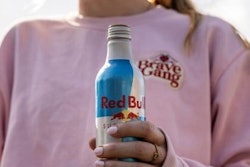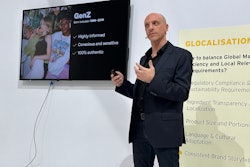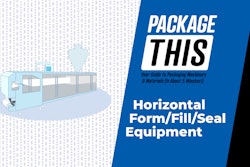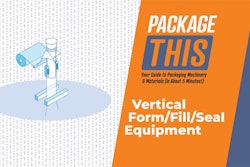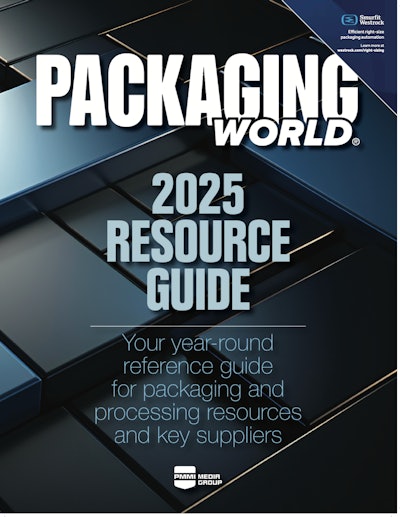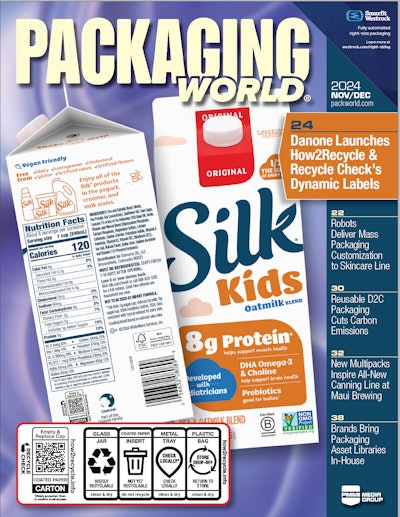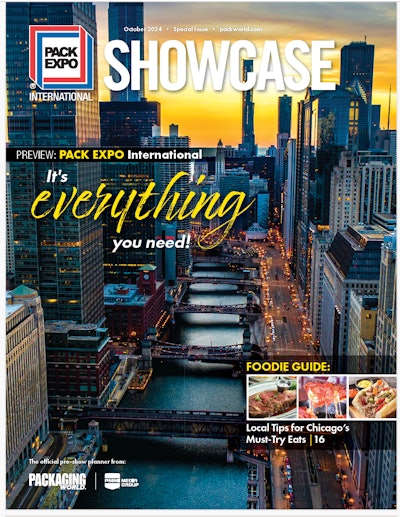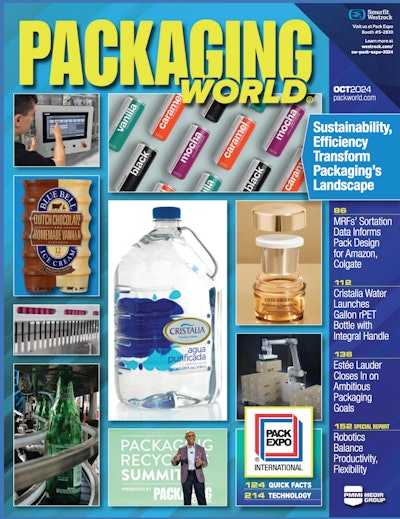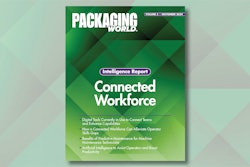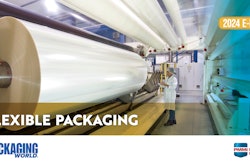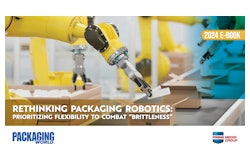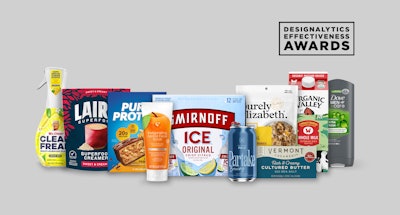
For years now package design has languished as the misfit of the marketing mix. Conventional CPG wisdom has held that it's a necessary, but not particularly impactful element when it comes to brand growth. With the advent of new design measurement capabilities, however, the industry is realizing that these assumptions are obscuring significant risk and hindering design’s massive upside potential.
The risk side of the equation took center stage late last year when a CPG redesign made national news for all the wrong reasons. Tropicana had launched an ill-conceived redesign and watched sales plummet 19% as a result. The story was eerily similar to the orange juice giant’s 2009 design failure—one that transformed design attitudes and processes, and effectively established an industry-wide design validation protocol that remains to this day.
Stories like Tropicana highlight the risk of poor design choices. What’s missing from the news, though, are the stories of design success—brands that have increased sales thanks to a redesign.
There are many out there. In fact, several brands were recently recognized for exactly that as part of the Designalytics Effectiveness Awards. Unlike traditional design competitions, the selection process for these awards is entirely data-driven—based on in-market sales performance and quantitative consumer testing of each redesign. Winning brands come from a variety of categories and see impressive year-over-year sales increases.
Seeing successes like these, CPG brands are understandably looking for the secret to creating designs that boost brand growth. While there is no “magic bullet,” there are approaches that consistently deliver results. Here are some strategies and tactics that amplify design effectiveness, along with real-world examples of the award-winning brands that have leveraged them masterfully.
Start with questions
When embarking on a redesign, savvy brands eschew assumptions and start by asking the right questions. "How is our design performing relative to our competitors? What are we communicating effectively or poorly? Which of our design assets is serving us well, and which can be improved?" That’s just the beginning of what brands can explore as they create an informed, detailed creative brief.
At this stage, it can be both illuminating and a bit surprising what you learn by asking questions instead of presuming you know the answers. For example, one winner of the awards, Organic Valley, believed photography of its actual farmers on the packaging was creating create a connection with consumers. Organic Valley had assumed that real photographs of its farms would lend the company authenticity. But research revealed that wasn't the case; pleasant graphic depictions actually scored better, so the brand pivoted to follow the data.
Organic Valley had assumed that real photographs of its farms would lend the company authenticity. But research revealed that wasn't the case; pleasant graphic depictions actually scored better, so the brand pivoted to follow the data.
Not so, according to consumer research the brand conducted: Category buyers preferred charming illustrations of animals in an idyllic farm setting. “The drawings of the farms and animals were communicating transparently and honestly even more so than the photos were, which was a pretty fascinating realization for us,” says Josh Peters, Organic Valley’s creative director.
Use objective feedback early and often
Early-stage testing—with the goal of learning, not necessarily “winning”—is the foundation of so many successful designs. The important thing at this stage is to use consumer feedback to improve every iteration. Early stage design testing helped 1440 Foods' Pure Protein brand get early consumer feedback that helped guide future iterations.
Early stage design testing helped 1440 Foods' Pure Protein brand get early consumer feedback that helped guide future iterations.
Even if you discover a leading design concept early on, it’s very likely that it can be dramatically improved by utilizing consumer feedback. This was the case with Pure Protein’s bold redesign. The brand used early testing to see which concepts performed well with consumers, which didn’t, and how the team might refine designs to make them even better.
The early feedback was invaluable in developing the final, award-winning design. As a bonus, this consumer-fueled, iterative approach helped bolster the brand’s confidence early on. “Having data at that stage helped us feel comfortable as we were making decisions,” says Alex Fishman, creative director at 1440 Foods, which owns Pure Protein.
Amplify taste (and scent) imagery
When it comes to the food and beverage categories, dialing up taste imagery can do wonders for your design’s performance.
Purely Elizabeth’s winning redesign featured a large image of a bowl of its granola in milk, which emphasized the texture of the product. This was a shift from a window that showed the product itself—a common convention in the category. “Our window wasn’t helping us communicate the delicious, unique taste and texture of our granola in a way that allowed consumers to imagine how they would enjoy it at home,” says Hannah Bruce, creative director at package design agency Ptarmak, who worked on the redesign.  Package design for P&G's Mr. Clean Clean Freak brand leans heavily into visual representations of the product's aroma.
Package design for P&G's Mr. Clean Clean Freak brand leans heavily into visual representations of the product's aroma.
It’s not just taste, either. People love imagery that stimulates the senses in any way. Another winner, Mr. Clean Clean Freak, focused heavily on conveying the appealing aromas of the multi-purpose cleaner. “The research showed that we had an opportunity to amplify an element consumers loved: the scent,” says Jen O’Quinn, senior creative director for Home Care Brands at Procter & Gamble, the brand owner behind Mr. Clean product lines.
Improve communication of top purchase drivers
Saying objectively important things better contributes mightily to sales performance, with an 88% correlation to directional in-market outcomes, according to Designalytics’ data. The key word there is objectively—that is, what consumers have says is important to them, rather than what a brand thinks is important. Dove Men + Care won an award for its design back in 2022, but returns with an updated, and according to consumer data, more appealing version in 2024.
Dove Men + Care won an award for its design back in 2022, but returns with an updated, and according to consumer data, more appealing version in 2024.
Unilever's Dove Men+Care had already won a Designalytics Effectiveness Award in 2022 for its body wash, but the brand knew it could still improve—and it certainly did. According to Designalytics’ testing, the new design outperformed its award-winning predecessor in communicating all 12 of the most important purchase drivers in the category, and by an average of 45 points. With modified visual cues and enhanced claims, the brand took an already-stellar design and made it better. “We wanted consumers to know that despite the design changing, the product’s efficacy has only gotten better,” says Kei Hayashi, art director at forceMAJEURE, the agency that worked on the redesign.
Create bolder, more consistent branding
Brand awareness is always important, but it’s absolutely essential for challengers and brands transitioning from primarily e-commerce to major brick-and-mortar retailers. Laird Superfoods status as a challenger brand means that brand consistency across the omnichannel is key to package design.
Laird Superfoods status as a challenger brand means that brand consistency across the omnichannel is key to package design.
With its recent redesign, Laird Superfood was able to maintain the personality and ethos of its founder (legendary surfer Laird Hamilton) while creating a bold, attention-grabbing design that could be applied across the portfolio. Stone Strategy & Design, the brand’s agency, captured Hamilton’s confidence by enlarging the logo significantly, using consistent colors, and adding a subtle wave shape within the ‘A.’ “The boldness of the brandmark really fits the brand [and] helps build awareness,” notes Kelley Cobb, creative director at Stone.
Each of these brands, and plenty of others, have unlocked the potential in their package designs and are experiencing growth as a direct result. So which brands will be winners in 2025? We can’t wait to find out.
Note: Brands interested in applying for a 2025 Designalytics Effectiveness Award can apply here until February 28. There is no cost to apply for this award category.
Designalytics provides the industry’s first system for maximizing brand growth through the power of package design. By leveraging its first-of-its-kind measurement methodology, the company can correctly predict the directional impact of a design change on sales outcomes more than 90% of the time.


